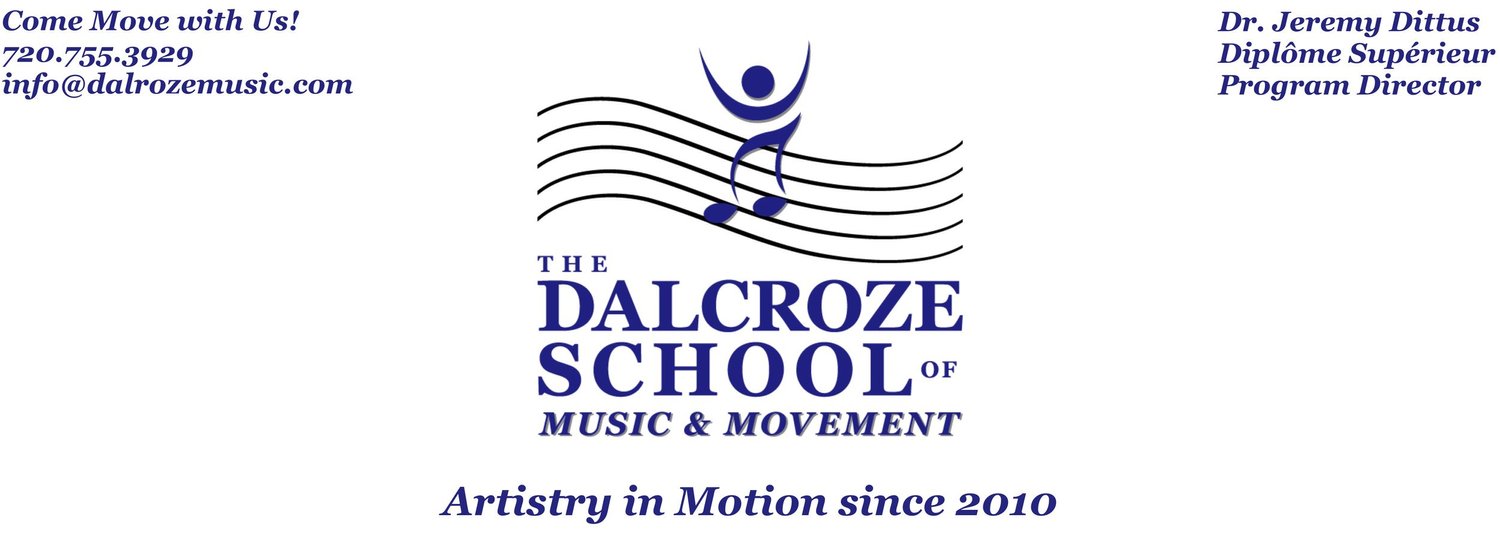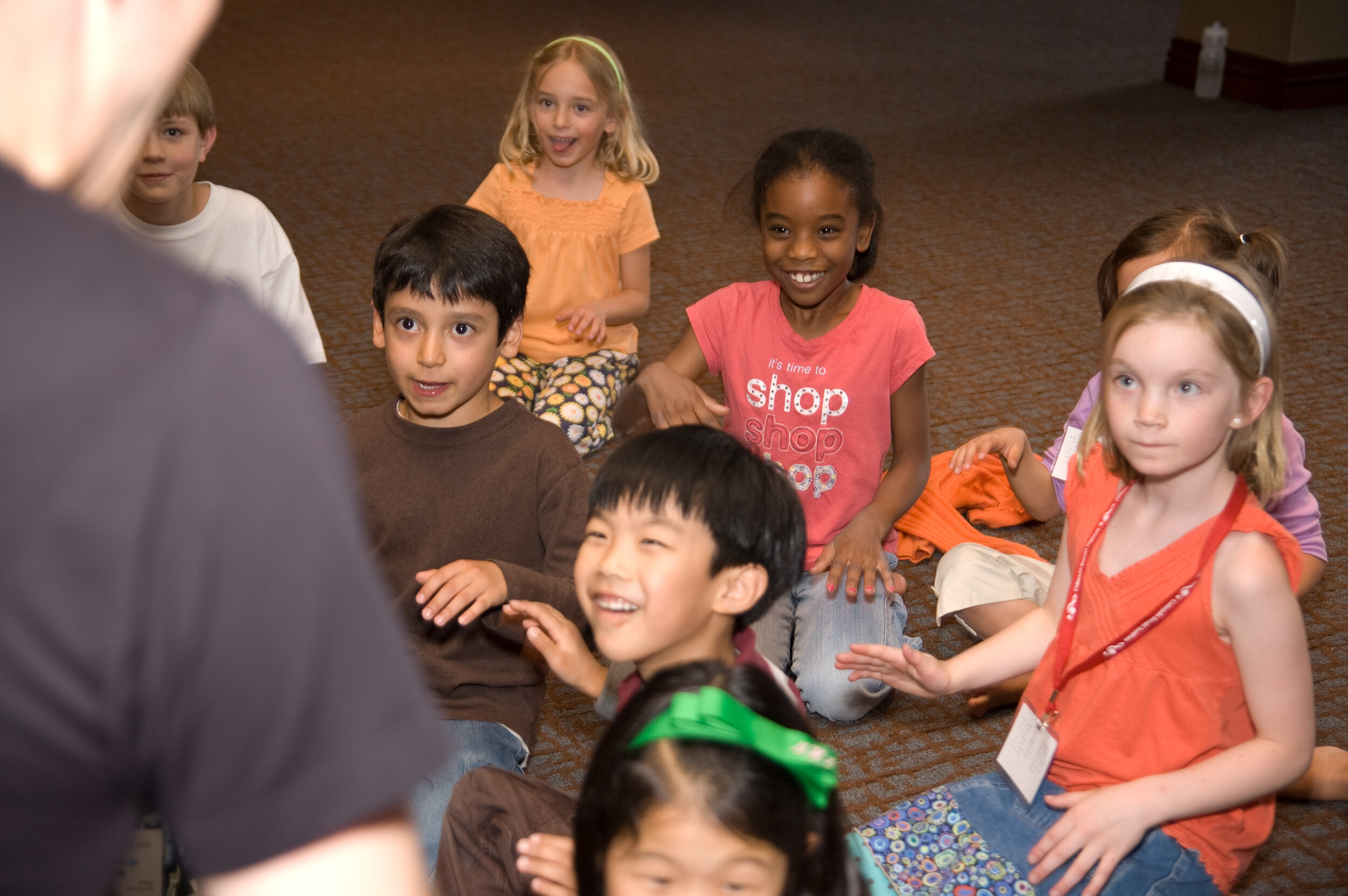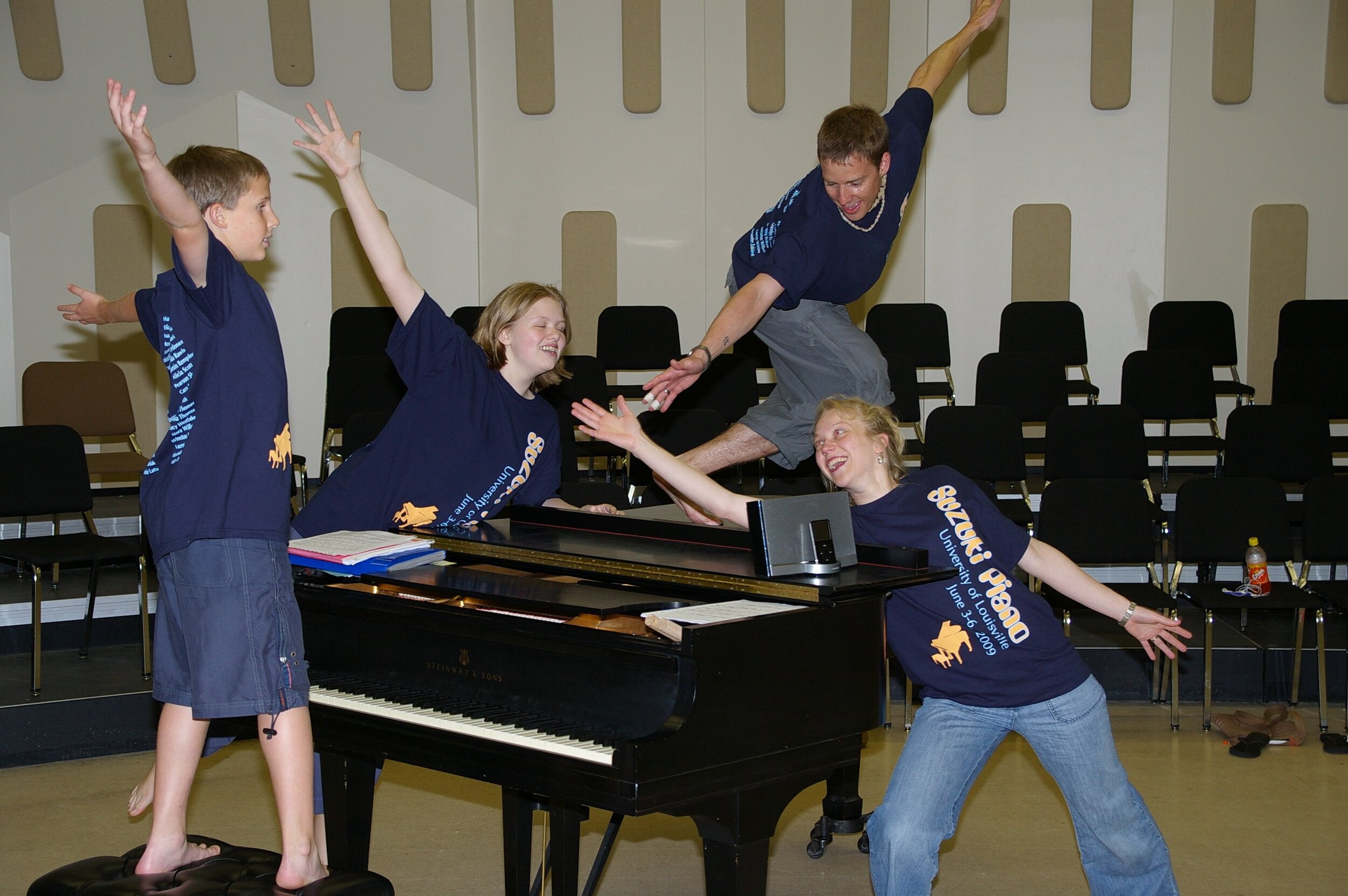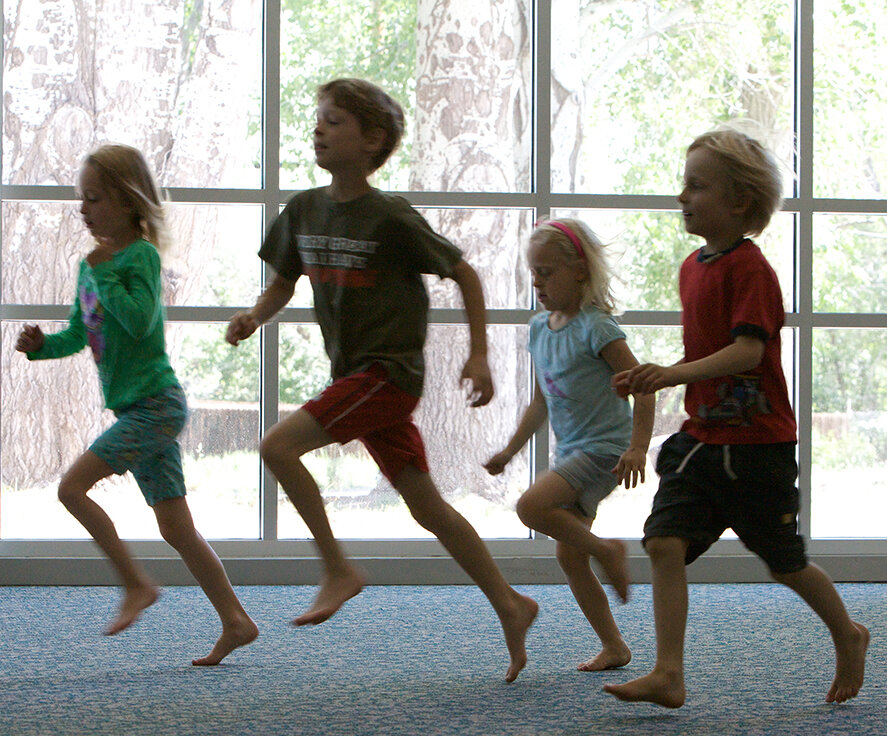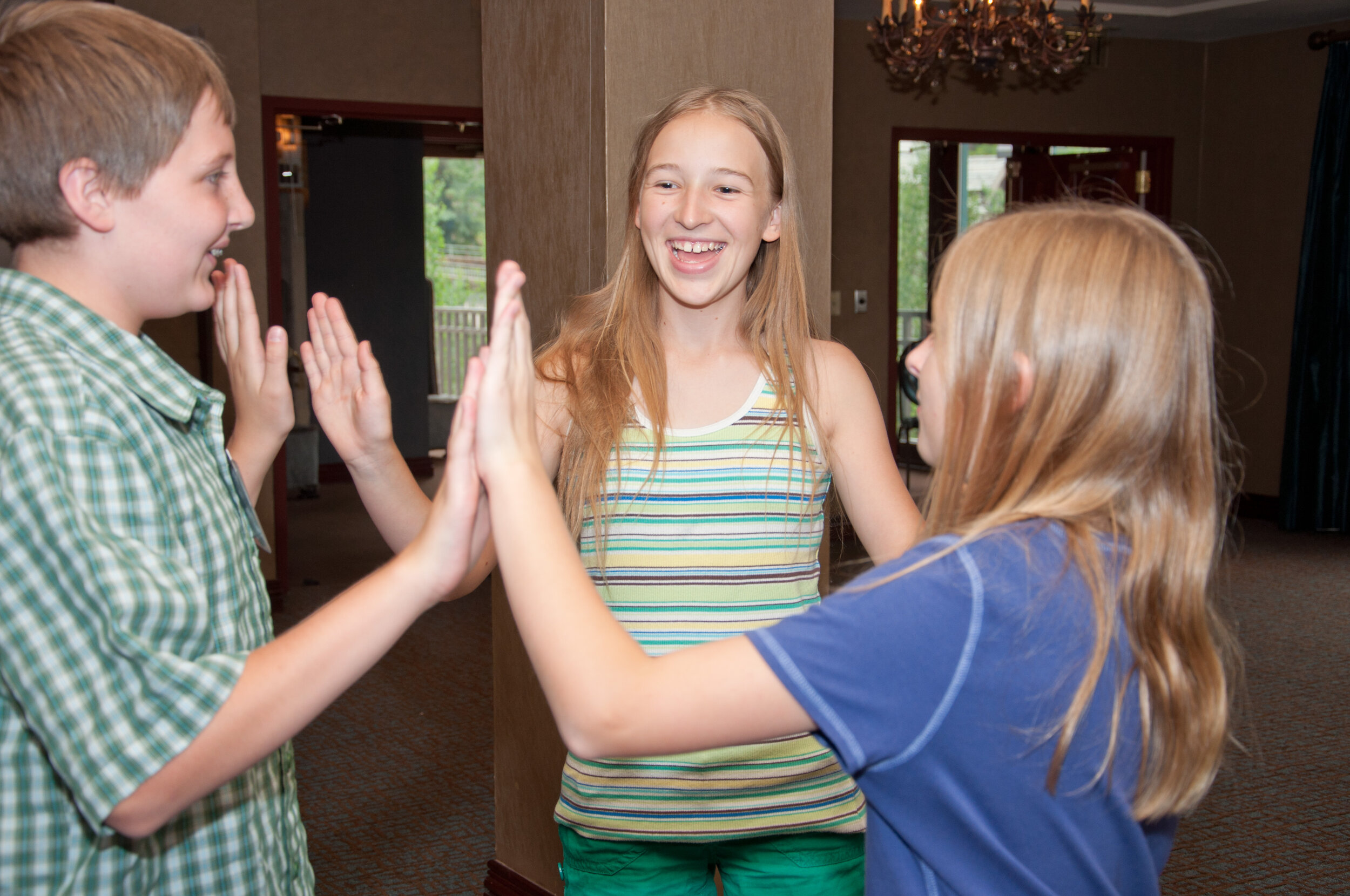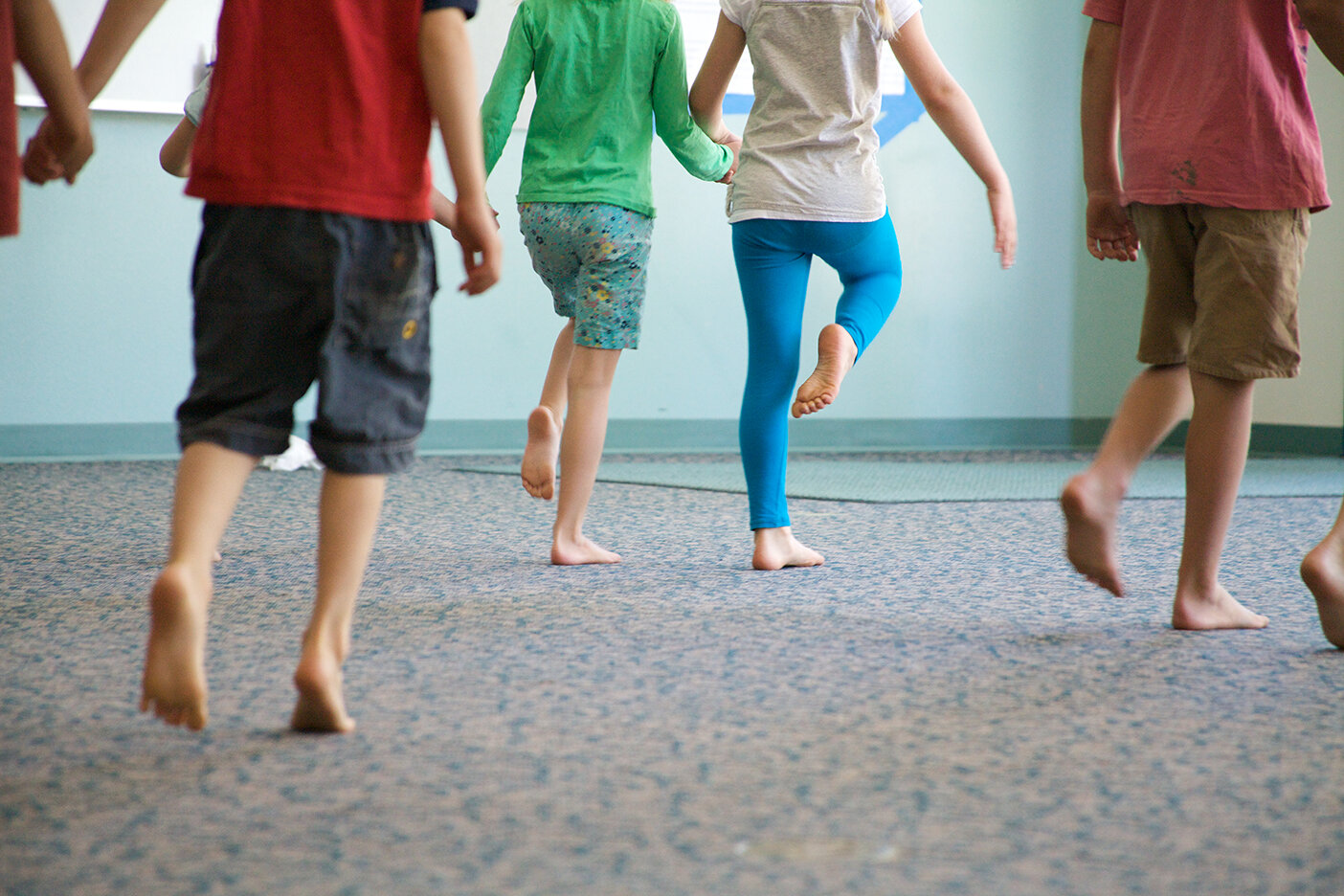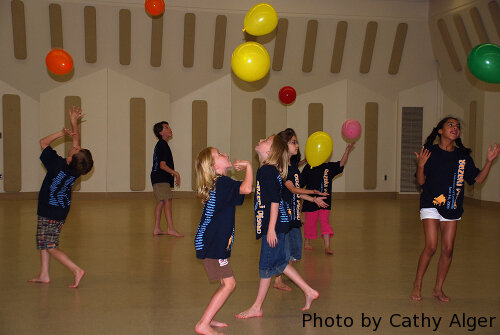Dalcroze Rhythmic-Solfège for Older Students
In Person and Virtual Options
Powerful, Engaging, and Dynamic Music Learning!
For older children ages 6-14, The Dalcroze School of Music and Movement offers Rhythmic-Solfège classes that build their skills and deepen their love of music.
Dalcroze's approach to music pedagogy is the only modern method that originated in the conservatory with adult pre-professional musicians. The method works best when it is applied in tandem with an applied instrument so that students can see how the skills they are learning in the Dalcroze classroom function in real life at the instrument.
Benefits of this education include improved intonation, finer listening capability, better ensemble skills, energetic rhythmic and metric vitality, and a deepened understanding of musical analysis, nuance, and aesthetics as they relate to performance.
The complete progression of five levels will provide students with a solid and comprehensive music education, and students who complete the entire sequence will have the same competency of any college-level freshman conservatory student.
Why Choose the Dalcroze Rhythmic-Solfège Path?
We Foster Active, Joyful Learning
The Dalcroze Rhythmic-Solfège sequence will provide students with all of the necessary building blocks to achieve success with their chosen instrument.
This process-oriented program maintains the Dalcrozian tenets of discovery-based, experiential education as its foundation, but begins to delve more deeply into musical subjects and literature.
We develop the relationship among the body, the mind, and the spirit as it relates to instrumental study, performance, and creativity.
We Champion the BODY as our primary instrument
In Dalcroze Education, movement is the means for learning. So when a child begins to apply the ideas she learns in the Dalcroze classroom to her applied instrument (piano, violin, flute, etc.), the learning process is easier, and the technical challenges associated with her specific instrument the only real challenges to overcome.
When learning is easier, meeting challenges is easier, and that translates into what every parent wants for their child's musical learning experience: IT'S FUN!
Musically, we will address the essentials of performance through the body while we increase our students' capacity for independent and cooperative learning. this includes:
Rhythmic precision and metric vitality
Internal listening and continued development of the ear
Emphasis on good intonation and in-tune singing
Expressive and imaginative music-making
We Develop the Whole Musician
Learning music away from the instrument is important in developing the whole musician. In this way, students appreciate music on an intuitive and instinctive level. They immediately react to what they hear and learn from that experience.
In the Dalcroze philosophy, using the body as a means to understand these musical principles makes for a joyous, multifaceted, and profound learning experience.
Students learn to play a 27-note metallophone to help visually understand pitch relationships while improving pitch matching and coordination.
We Cultivate the Ear through Solfège: an Artistic European Tradition
In the Romance-language cultures (France, Italy, Spain, and Switzerland, etc.), Solfège training is an essential part of a child's musical development. In these cultures, no one learns how to play an instrument without several years of Solfège instruction at the same time.
Solfège teaches musicians how to hear with their eyes and see with their ears! We often call this internal listening or internal hearing.
As they listen, students can imagine how the notes and rhythms could be written down on the staff.
Students might see notes and rhythms on the page and know how they should sound without the aid of a piano or other instrument.
In Solfège students learn to sing the notes on the staff in two ways.
We sing absolute pitches using letter names.
We sing relationships between notes using scale degree numbers.
We Inspire Expression, Dedication, and Commitment
Assignments and homework will be a regular part of the curriculum, as well as a commitment from both parent and child to practice melodies and rhythms together at least 10 minutes each day, 5 days each week.
Parents in RS I, RS II, and RS III attend the first 15 minutes of each class to better help their child practice at home.
This practice is essential for continued musical development and deep learning. It will also help establish good practice habits for when the child begins playing an instrument.
Our program is modeled after similar models in Western Europe. Though this sequence moves at a slower pace than most of the European schools, the goal is to provide thorough, comprehensive musicianship and not surface knowledge of the material.
At the end of the year, students showcase their hard work and effort in juried exit evaluations. These juries help give the child and parent a tangible goal while ensuring quality in the program ad readiness for the next level. All components to the evaluations will be given at least 2 months prior to the exam date so that everyone is prepared and the experience is a successful and rewarding one. If, per chance, a student may not be ready to advance, the decision to not take an exam will be made together with the Director, parent, and student.
Those students who successfully complete the entire sequence will receive a Solfège Diploma from the Dalcroze School of Music and Movement, and will be ready for any freshman-year university/conservatory solfège program.
Questions
If you are unsure about your child's appropriate level, would like to schedule an audition, or have general questions, please reach out to us. We'd love to hear from you.
“My daughter thrived with Jeremy and all the wonderful instructors at The Dalcroze School of the Rockies! She will never approach music the same way again and has a deep understanding of what it means to learn music through the body.”
“I would like to thank you for a wonderful class; [it] was very fun and beneficial. I now totally understand how using Dalcroze can teach you to stay together and feel the rhythm and beat!”
“I love the dynamic energy of the Dalcroze classroom: students poised with razor-sharp ears, tuned into every nuance coming from the piano, and ready to demonstrate with their bodies everything they hear. This type of learning inspires creativity, alive with the possibility of new discoveries at every turn, leap, and gesture. When students acquire the habit of listening with this type of intensity, they begin to develop fluency in the language of music and their artistic potential can grow exponentially!”
Click on the link below to watch an excerpt from a class of Rhythmic-Solfège V and Advanced Dalcroze students present at the 2020 Dalcroze Society of America National Conference…the students were fabulous!
Rhythmic-Solfège Goals and Objectives
For students under 7 years of age, is recommended that one year of Eurhythmics be taken in advance of the Rhythmic-Solfège series. For older students, please contact us for a placement evaluation.
